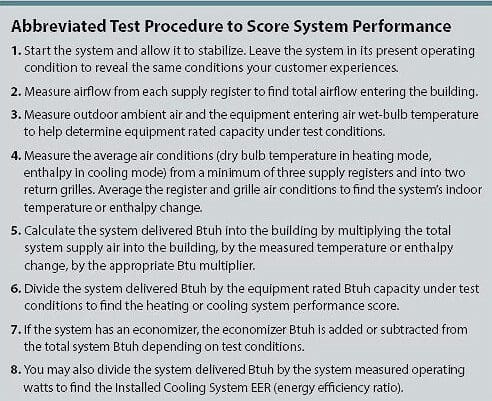Until recently, there was no standard to measure the efficiency of an HVAC system after installation. At least, that was until Rob Falke, president of the National Comfort Institute, was challenged to do so. After roughly five years, the result was ASHRAE standard 221. It has essentially raised the bar for the HVAC industry by holding the industry accountable at the in-field level.
ASHRAE Standard 221
Equipment efficiency ratings differ from installed system efficiency measurements–a common misinterpretation. Now, with ASHRAE Standard 221, technicians can run a series of tests in the field to measure and score an installed HVAC system.
On top of that, Falke says HVAC professionals can use the standard to create, build and field-verify one of the highest efficiency products that can be delivered today. This standard helps us know, for certain, how an installed system scores against what the manufacturer logs during in-lab tests.
“ASHRAE 221 reveals a truth the industry and consumers have always looked for but have not been able to find,” Falke said for ACHR News. An excerpt of Falke’s in-depth explanation:
For decades, the industry has assumed the yellow efficiency label on the equipment guarantees the efficiency of the system once it’s installed in the field. It does not. Although equipment manufacturer’s data is completely valid and supported by countless industry standards, an installed system is a different product than the equipment in the laboratory and has a different efficiency once installed in a building. Two different products, two different efficiencies.
The Competitive Advantage to ASHRAE Standard 221
Those trained and skilled in ASHRAE standard 221 and the necessary test methods benefit their business in many ways. The standard applies to both residential and commercial heating and cooling systems. The tests are the same for both: testing airflow, temperature and electrical capacity. Scoring will take about an hour in most cases, sometimes longer for larger systems. HVAC professionals simply follow the test procedure outline:

How does Standard 221 benefit your business or company? First, it helps build trust and establishes your role as an expert. You can identify the losses in the system once installed and the solutions to increase the performance of your customer’s system. Second, your compensation should be equally rewarding. Most will be happy to hear they don’t need a complete system changeout. Thus, whatever component fixes or changes you recommend should be welcomed by clients. Aside from IAQ, this is another way to differentiate your business from competitors.




